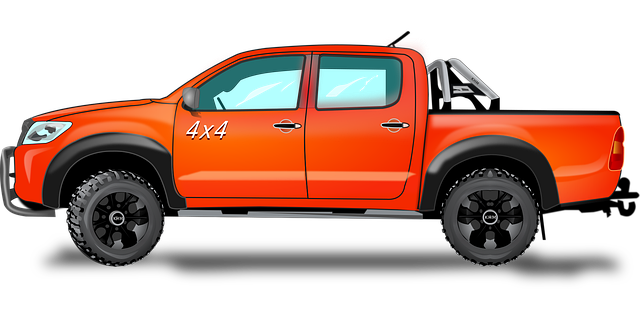Truck winches in Brownsville, Texas, are essential tools for emergency services, providing powerful pulling capabilities across diverse terrains and unpredictable weather conditions. They ensure swift response times, safe vehicle extraction, and enhanced rescue operations, as demonstrated during recent mudslide incidents. Effective disaster response relies on choosing the right recovery equipment based on specific needs and environmental factors. Regular maintenance is critical to guarantee their reliability and optimal performance when saving lives and property in Brownsville's challenging conditions.
In emergency situations, having the right recovery equipment can be a lifeline. This comprehensive guide explores essential tools designed for life-saving rescue operations, with a special focus on truck winches their role in disaster response, as exemplified by a case study in Brownsville, Texas. We delve into crucial factors to consider when choosing effective recovery equipment and vital safety guidelines for year-round readiness.
- Understanding Recovery Equipment: Essential Tools for Emergency Situations
- The Role of Truck Winches in Disaster Response: A Case Study in Brownsville, Texas
- Choosing the Right Recovery Equipment: Factors to Consider for Effective Rescue Operations
- Maintenance and Safety Guidelines: Ensuring Your Recovery Equipment is Ready When Needed
Understanding Recovery Equipment: Essential Tools for Emergency Situations

In emergency situations, recovery equipment plays a pivotal role in extricating vehicles and individuals from challenging circumstances. These essential tools are designed to provide immediate assistance during accidents, road emergencies, or off-road adventures. Among the array of recovery gear, truck winches stand out as powerful and versatile devices. In Brownsville, Texas, where diverse terrains can present unexpected challenges for vehicle owners, having a reliable truck winch is invaluable.
Brownsville’s unpredictable weather and varied landscapes, from bustling city streets to rugged rural areas, demand robust recovery solutions. A truck winch, capable of handling heavy loads and navigating tough terrain, becomes an indispensable asset. These winches are not just for towing; they provide the necessary power and reach to pull stuck vehicles free or lift heavy objects in emergency situations. With a well-equipped truck equipped with a top-quality winch, residents can face potential hazards head-on, ensuring faster response times and enhanced safety during emergencies.
The Role of Truck Winches in Disaster Response: A Case Study in Brownsville, Texas

In disaster response efforts, particularly in challenging terrains like Brownsville, Texas, truck winches play a pivotal role in rescue operations. These powerful machines are invaluable assets for emergency services as they facilitate the extraction and movement of vehicles involved in accidents or stuck in difficult situations. In the flat, arid landscapes characteristic of Brownsville, where conditions can be harsh and terrain unforgiving, truck winches provide the necessary pulling power to free stranded vehicles.
A case study in Brownsville highlights how these winches were instrumental in a recent emergency. When multiple vehicles were caught in a severe storm-induced mudslide, conventional rescue methods would have been inadequate due to the remote location and treacherous conditions. However, truck winches quickly arrived on the scene, enabling rescuers to efficiently extract trapped cars, ensuring swift medical attention for all involved. The efficient deployment of these machines underscored their critical importance in disaster response, demonstrating how they can be a game-changer in challenging environments like Brownsville, Texas.
Choosing the Right Recovery Equipment: Factors to Consider for Effective Rescue Operations

When it comes to selecting recovery equipment, several key factors must be considered to ensure effective rescue operations. One of the primary considerations is the type of vehicle or object that needs recovering. Different scenarios require specialized tools; for instance, a truck winch in Brownsville, Texas, might be essential for towing and lifting heavy vehicles, while smaller, more versatile jacks and dollies are better suited for light-duty rescues.
Additionally, the terrain and environmental conditions play a significant role. Rough or uneven ground may necessitate sturdy, all-terrain recovery equipment capable of withstanding harsh conditions. Weather conditions, such as extreme heat or cold, can also impact equipment performance, so choosing gear designed for specific climates is vital. Remember, the right tools make all the difference in successful and safe rescue operations.
Maintenance and Safety Guidelines: Ensuring Your Recovery Equipment is Ready When Needed

Maintaining and regularly inspecting your recovery equipment, especially truck winches in Brownsville, Texas, is paramount to guarantee their reliability when disaster strikes. These powerful machines are designed to assist in challenging situations, so ensuring they’re in top condition is crucial for safety. A simple yet effective routine includes checking for any signs of wear or damage, lubricating components as per the manufacturer’s guidelines, and verifying that all controls and mechanisms operate smoothly.
Additionally, familiarizing yourself with the equipment’s operation manual is essential. Understanding the safety features and proper usage will enable you to respond efficiently during emergencies. Regular maintenance not only extends the lifespan of your truck winches but also ensures they perform optimally when needed most, providing peace of mind for any driver or rescue team in Brownsville, Texas, or beyond.
In conclusion, recovery equipment, particularly truck winches in Brownsville, Texas, plays a pivotal role in emergency response and rescue operations. As illustrated through case studies, these essential tools empower professionals to navigate challenging landscapes and save lives. When choosing and maintaining recovery equipment, understanding the specific needs of your region, selecting robust and reliable hardware, and adhering to safety guidelines are paramount. By prioritizing these aspects, communities can enhance their preparedness and ensure swift, effective responses during crises.



